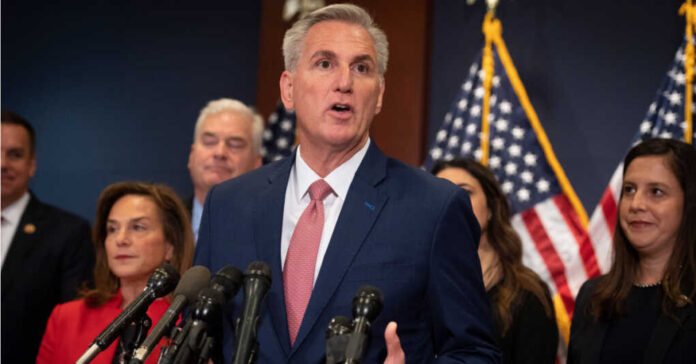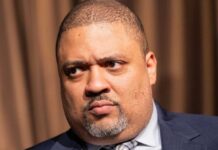
With no clear path forward to avert a government shutdown, frustrated lawmakers are discussing a seldom-used tactic to bypass House Speaker Kevin McCarthy and the hardline Republicans who are currently holding up government funding. The procedure, known as a discharge petition, has only been successfully used a handful of times for issues such as proposed constitutional amendments and campaign finance reform.
A discharge petition is a procedure that allows members of the House of Representatives to force a bill out of committee and onto the floor for a full vote. This is significant because most bills are initially referred to a committee for review and consideration, and if the committee decides not to bring the bill to the floor, it can effectively be shelved and never voted on.
Discharge petitions are typically used when a group of lawmakers believes that the leadership or a committee is preventing a bill from advancing, and they want to bring it to a vote despite opposition. It is a way for rank-and-file members to bypass the usual committee process and force a bill to the floor for debate and voting.
To initiate a discharge petition, a member of the House must first file the petition. The petition must then be signed by an absolute majority of House members, which is currently 218 members. Once the required number of signatures is obtained, the bill is brought to the floor for consideration.
Discharge petitions are not commonly successful, as they require a majority of House members to sign, and the leadership often exerts influence to prevent them from gaining enough support. However, they serve as a tool for members of Congress to make a statement and push for a vote on a particular issue.
The bipartisan Problem Solvers Caucus co-Chair Brian Fitzpatrick (R-PA) emphasized the need for bipartisan solutions and compromises in addressing critical issues like federal government funding due to the divided control of Congress.
The discharge petition may contain multiple options, one of which is a promising proposal from the House Problem Solvers Caucus that suggests funding the government until January 11 to give lawmakers more time to hammer out bipartisan legislation.
This bipartisan proposal suggests passing a full-year budget for 2024 by January 11, 2024, following certain financial guidelines. It also wants to create a Fiscal Commission to deal with long-term financial issues and asks the Congressional Budget Office to consider debt-related costs when making estimates. The proposal suggests reforms to how budgets are managed based on recommendations from two congressional committees, focuses on allocating funds for Ukraine with transparency and disaster response in mind and aims to implement border security measures throughout 2024.
After a lawmaker introduces a discharge petition and it gets the required 218 House votes, the motion must wait on the calendar for a minimum of seven legislative days. During this period, the House is informed that the motion is scheduled to be brought to the floor. Following this waiting period, the Speaker of the House decides on the timing for its consideration within two legislative days after the member initiates the discharge motion intent.
A bill is not eligible for a discharge petition until it has been in the committee for at least 30 legislative days. It’s not an option to avert a government shutdown by the end of September, but it could serve as a final resort to reopen the government if the GOP’s internal disagreements continue.
In other words, a discharge petition is not a fast track to avoiding a government shutdown and could be risky for those signing on. Because discharge petitions are used when a member of the same party as the leadership wants to bypass the committee process or go against the party’s official position, the procedure can be seen as a breach of party loyalty.
Additionally, the issues covered in the discharge petition may not align with the views of a leader’s constituents. The act of signing a discharge petition can be portrayed negatively in the media and by political opponents, making elected officials vulnerable to criticism and negative public perception.
But two freshman GOP House members, Representatives Marc Molinaro (R-NY) and Mike Lawler (R-NY) have indicated their willingness to pursue a discharge petition with Democrats if the House Republican caucus fails to agree on a continuing resolution for short-term funding, and there are more who would support the measure to move beyond the issue.
Meanwhile, to Americans, this annual budget battle feels like déjà vu. Every year, the House acts like a pack of spoiled, underachieving college students cramming for an exam they’ve known about all year.







